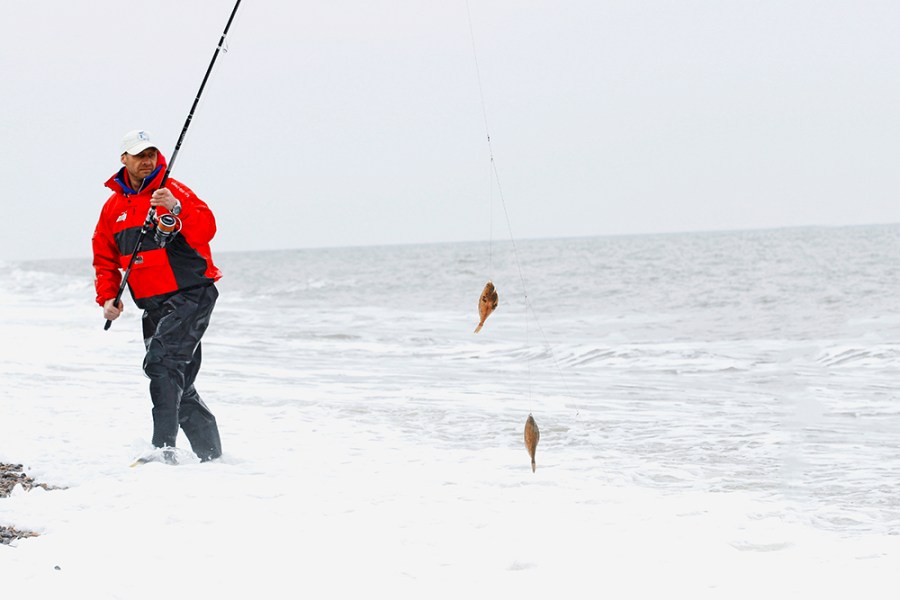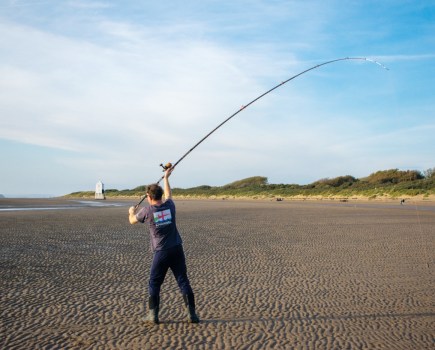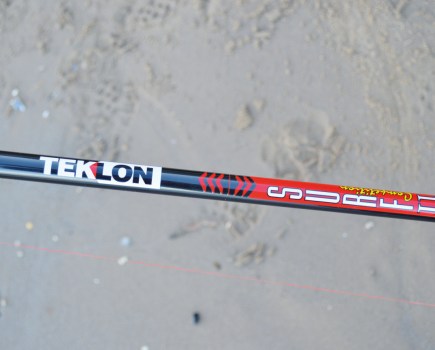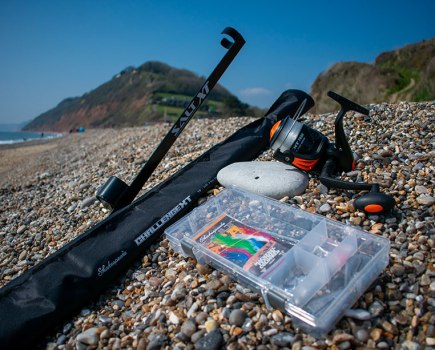Overseas they’re labelled surf rods, but over here we refer to them as Continentals. So what’s the deal? The UK marketplace is rapidly filling with these three-piece, delicate outfits and choosing one is becoming a nightmare for shore anglers.
Although our European counterparts use them to great effect, many British sea anglers may not be buying them for the right reasons. Ask yourself what exactly are you getting into? Are your needs such that a light and tippy three-piece beach rod will fulfil your requirements? What exactly are you planning to get out of this type of rod?
For many, simply seeing a pegged match on a local beach is enough. Watching experienced match anglers launching long rigs armed with tiny hooks and specialist baits out of sight with a Continental rod and then winding in triple-shots of bream, rockling, flatfish or whiting can clinch the deal for them.
There is certainly a time and a place in the UK for Continental rods. They offer an alternative to whacking and winding in every 15 minutes, hoping something has hooked itself. They’re also a better option than skull-dragging whiting and flatties up the shingle.
Without wanting to state the obvious, you wouldn’t need one if your chosen venues are snaggy or have extremely fast-running tides. Nor would I recommend one if you mainly target cod, rays and smoothhounds.
However, if you prefer the touchy-feely side of shore fishing, presenting delicate baits and watching the rod tip being dragged around, or if you enjoy walking to the water’s edge and carefully beaching your fish, after feeling every headshake on the retrieve, then one of these rods is for you.
Which one to opt for, though, is primarily down to your budget.
VERTIX MODELS
I recently took three models from Grauvell to the beach. The Spanish company is an experienced outfit that produces quality lightweight, three-piece Continental rods and at reasonable prices too.
The models I tried all fall under the Vertix label and were titled Magic, Inspire and Odissey. I must confess I did enjoy using them, especially as a horde of dabs and whiting were in the mood for a feed.
They cast extremely well, coupled with my fixed-spool reel loaded with 18lb mono and tapered shockleader. As soon as my long, three-hook rig touched down and settled, the tip was being aggressively pulled forward. The fact that the rod tip showed these hungry flatties were taking my baited size 4 hooks was exciting.
The three models may have carried different price tags, but I couldn’t notice any obvious differences. They all performed exactly the same in casting and bite detection. Therefore, prices are reflected cosmetically. I’m reliably informed by Grauvell on the following differences.
The Vertix Magic LC-MT 420 has a high carbon construction with a mixed tip. Lined with SiC Sea Guides and reel seat and collared sections, the casting rating is 3.5oz to 7oz and the rod has a price tag of £149.
The Vertix Inspire LC-MT 420 is a high modulus matrix carbon blank with a mixed tip. It’s lined with genuine Fuji guides and reel seat with collared sections. The casting rating is 3.5oz to 7oz and the rod costs £230.
Finally, coming in at £260 is the Vertix Odissey LC 420. The rod is constructed from a whisker high modulus carbon and has a through tip. It’s lined with Fuji guides, has a Fuji reel seat and collared sections, and boasts a casting rating of 3.5oz to 7oz.
All three rods have contoured butt grips and come with padded, three-sectioned rod bags.
With the majority of differences being cosmetic, blank quality and thickness, plus different guides and reel seats, I did find it rather difficult to tell them apart when fishing. So, it really is up to you which one you decide upon.
For more information on the range of Grauvell rods, contact: Veals Mail Order, 306 Central Park, Hengrove, Bristol BS14 9BZ, tel: 01275 892000. Web: www.veals.co.uk







